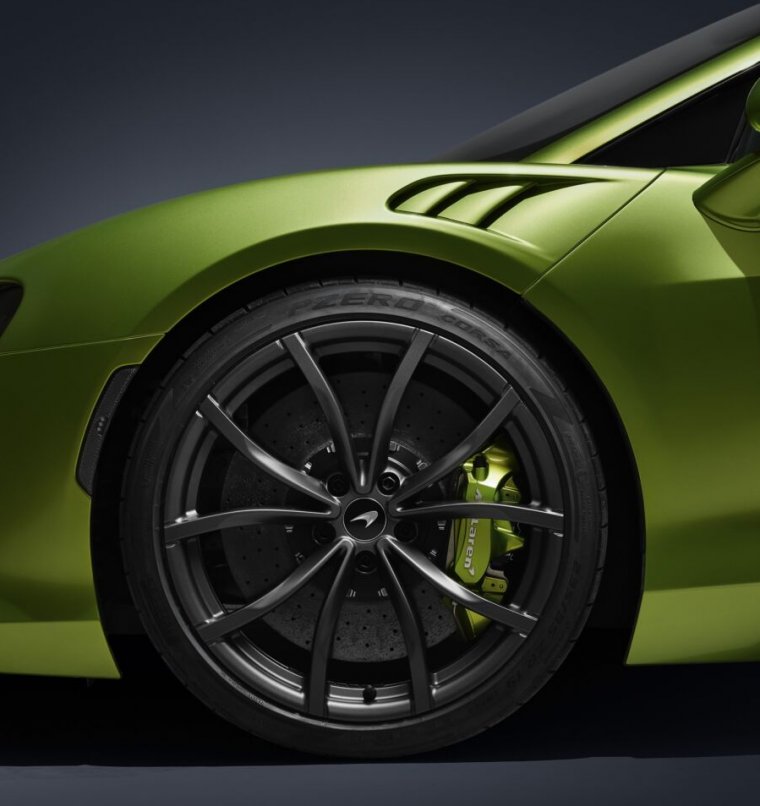Pirelli puts a wireless sensor in its new tire for the McLaren Artura
Pirelli #Pirelli

 Enlarge / The new McLaren Artura plug-in hybrid supercar will be the first production car to use tires with built-in monitoring sensors.
Enlarge / The new McLaren Artura plug-in hybrid supercar will be the first production car to use tires with built-in monitoring sensors.
McLaren
When the McLaren Artura reaches the road later this year, it will do so riding on the world’s first “Cyber Tires.” Made by Pirelli, the tires feature an evolution of the tire pressure monitoring systems (TPMS) that are now fitted to new cars. Normally, those sensors are in a car’s wheels, but Pirelli has here embedded them in the construction of the tire, where they measure pressure, temperature, and acceleration.
That little snippet of information from the Artura press briefing left me intrigued, if a little skeptical. So I reached out to Pirelli to see if it could convince me that smart tires are a good idea.
“Now we have the technology to install at industrial level a sensor inside the tire and, most of all, integrate the sensor into the car itself,” said Piero Misani, Pirelli’s senior VP of R&D. “You can put in a sensor, you can put in an app [linked to a tire], but this is not a dialogue between the tire and the car. That is something that is a standalone system. With the McLaren Artura, we believe that we’ll be the first to fully integrate a sensor in the tire with the car’s electronics.”
The idea dates back a few years to when Pirelli was thinking about ways to improve tire-pressure monitoring. “They took a quite ambitious choice to put a sensor in the tire because this is where you get most of the information. If you want to really extract information from the ground, the only point which is touching is really the [contact] patch area,” said Corrado Rocca, Pirelli’s head of R&D.
Rocca and Misani see the potential for tires to act as yet another distributed sensor platform, crowdsourcing data about the road conditions to other cars and to the layer of connected infrastructure that we’re told is just beyond the horizon. At a recent CES, Pirelli demonstrated this idea with a Cyber Tire that could warn other road users if it encountered hydroplaning, for example. But it turns out that the Cyber Tire might have practical benefits right now.
“For the first time, the car knows which tire is mounted, which means that this applies to all the electronic systems in the car,” Rocca explained.
Advertisement
Right now, a car’s TPMS can tell if pressures and temperatures are within an optimum window, but the car has no way of knowing whether it’s fitted with (for example) summer tires versus winter tires. A car that knows for sure what tires it’s fitted with could have quite different mapping for some of its subsystems depending on what those tires are.
Misani offers up the example of anti-lock brakes. “ABS braking is not strictly linked only to the grip of the tire itself, but it’s also connected to the dynamic response of the tire because the tuning of the ABS is linked to the stiffness of the tire in torsional mode, for example, and a winter tread pattern and a winter tire are definitely different from a summer one today,” Misani told me. Future iterations of the Cyber Tire may also modify ABS or traction control maps based on the wear level of the tire, although Misani said that was still a work in progress.
As you might expect, the tires communicate with the rest of the Artura via Bluetooth Low Energy. And low-energy consumption was definitely a priority for Pirelli. Eventually, the tires might be able to power themselves, converting some kinetic energy to electricity with each wheel revolution. For now, the sensor is battery-powered and weighs about 10 g (0.3 oz).
“And this has been quite a challenge, because, you know, the Artura is a 330 km/h [205 mph] car, which means that the centripetal force—every time you go one revolution, you have over 3,500 Gs of shock to the sensor, to the battery,” Rocco said. “We very carefully dimensioned the power consumption to be used only when it’s needed. For instance when you transmit, you switch on the radio; when you acquire, you switch off the radio and just use other parts of the circuit.”
Battery life is optimized to the specific tire—a performance tire fitted to a supercar like the Artura will have a shorter life than a set of all-seasons fitted to a family sedan.
At end of life, there’s no special recycling of the sensors; they meet the same fate as the rest of the tire, whether that’s a date with the chipper, retirement as part of a tire barrier at a race track, or maybe even incorporated into an Earthship.